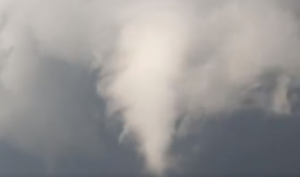La Nina is the large-scale cooling effect of the ocean surface in the Pacific, the area between the Tropic of Cancer and Capricorn. It stands as the opposite of the El Nino effect, which is the “warmer” phase. La Nino is a weather pattern that results in the cooling of surface ocean waters along with the tropical west coast of South America. It is the “cold” phase of El Nino- Southern Oscillation, linked with the ocean and weather-related phenomena. The effect has affected the patterns of rainfall, atmospheric pressure, and global atmosphere leading to droughts, flooding, and rainfall.
Also Read: La Nina climate cycle has peaked: UN
The UN agency stated that if the climatic condition stays till 2023 then there will be a “Triple-dip La Nina”, the third time since 1950 that the effect has stayed on for three years. The World Meteorological Organization indicated that La Nina has clutched the globe since September 2020. Some of the predictions suggest that it might persist till 2023. The La Nina has continued through May 2022 across the tropical Pacific. It has been observed that it has strengthened since March 2022.
How is it affecting the world?
The effect of the pattern can be traced to the drought situation in the Horn of Africa and the Southern part of America. The above-average rainfalls in South East Asia, and Australia and the above-average Atlantic hurricanes are also the effects of the La effect.
Also Read: UN talks urge faster steps to secure ‘critical’ ocean health
Human Impact on climate and La Nina
The natural climate events have intensified because of global warming which is, in turn, the cause of human interruption. “more intense heat and drought and the associated risk of wildfires – as well as record-breaking deluges of rainfall and flooding” said WMO chief Petteri Taalas. “We have seen this with devastating and tragic effect in the past few months in nearly all regions of the world. Climate change is increasing the severity and frequency of disasters,” he added.







